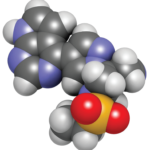EULAR 2023 (MILAN)—Over the past several years, a plethora of new treatments for patients with rheumatoid arthritis (RA) has emerged, while older treatments still play a large role in therapy for many patients. At the EULAR 2023 session titled Rheumatoid Arthritis: New Small Molecules and Old DMARDs, several speakers presented abstracts comparing different treatment effects across different patient populations.
Malignancy

Dr. Schaefer
Martin Schaefer, PhD, epidemiology and healthcare research, German Rheumatism Research Center (DRFZ), Berlin, discussed incident malignancies in real-world patients with RA receiving conventional Dr. Schaefer synthetic disease-modifying anti-rheumatic drugs (csDMARDs), targeted synthetic DMARDs (tsDMARDs) and biologic therapies.
Dr. Schaefer and colleagues analyzed patients from the RABBIT biologic registry and calculated incidence rates of malignancies, excluding non-melanoma skin cancer, for all patients.1 Incidence rates were also calculated specifically for patients who fit the inclusion criteria for the ORAL Surveillance trial, which compared tofacitinib with adalimumab, namely for those aged 50 and older with one or more cardiovascular risk factors. Incidence rates for malignancy in these groups were then compared with patients receiving tumor necrosis factor-alpha (TNFα) inhibitor therapy.
A total of 151 incident malignancies were reported for the five years of registry data reviewed, and incidence rates were comparable across all treatments, with 7 to 11 events per 1,000 patient-years. Among the selected patients who met inclusion criteria for ORAL Surveillance, incidence rates were higher, with a rate of 13.2 events per 1,000 person-years in patients receiving Janus kinase (JAK) inhibitor therapy. In adjusted analyses, the risk for malignancy of patients receiving JAK inhibitor therapy, rituximab, interleukin-6 (IL-6) or csDMARD therapy did not significantly differ from the malignancy risk of those patients receiving TNFα inhibitor therapy. This is important given the concerns prompted by the ORAL Surveillance trial, which found a possible increased risk of malignancy associated with tofacitinib.
MACE with JAK Inhibitors
Romain Aymon, BA, MS, statistician, Hôpitaux Universitaires de Genève, Switzerland, spoke on the topic of major adverse cardiovascular events (MACE) in real-world patients with RA being started on treatment with JAK inihibitor therapy compared with other biologic agents.
Aymon et al. looked at data from more than 50,000 treatment initia- tions in more than 34,000 patients.2 The mean follow-up period was 2.8 years, and patients from 14 RA registries from around the world were included in the study. MACE incidence rates were calculated and attributed to treatment if the event occurred up to three months after treatment cessation for any of these medications. (Note: For rituximab, events up to one year after treatment cessation were considered attributable to the treatment.) Using adjusted Poisson regression analysis, no significant difference in MACE was found between JAK inhibitor and TNFα inhibitor therapy; nor was there a difference between patients receiving all other biologic DMARDs vs. those receiving a TNFα inhibitor. This held true even when isolating patients who met criteria for the ORAL Surveillance study.


